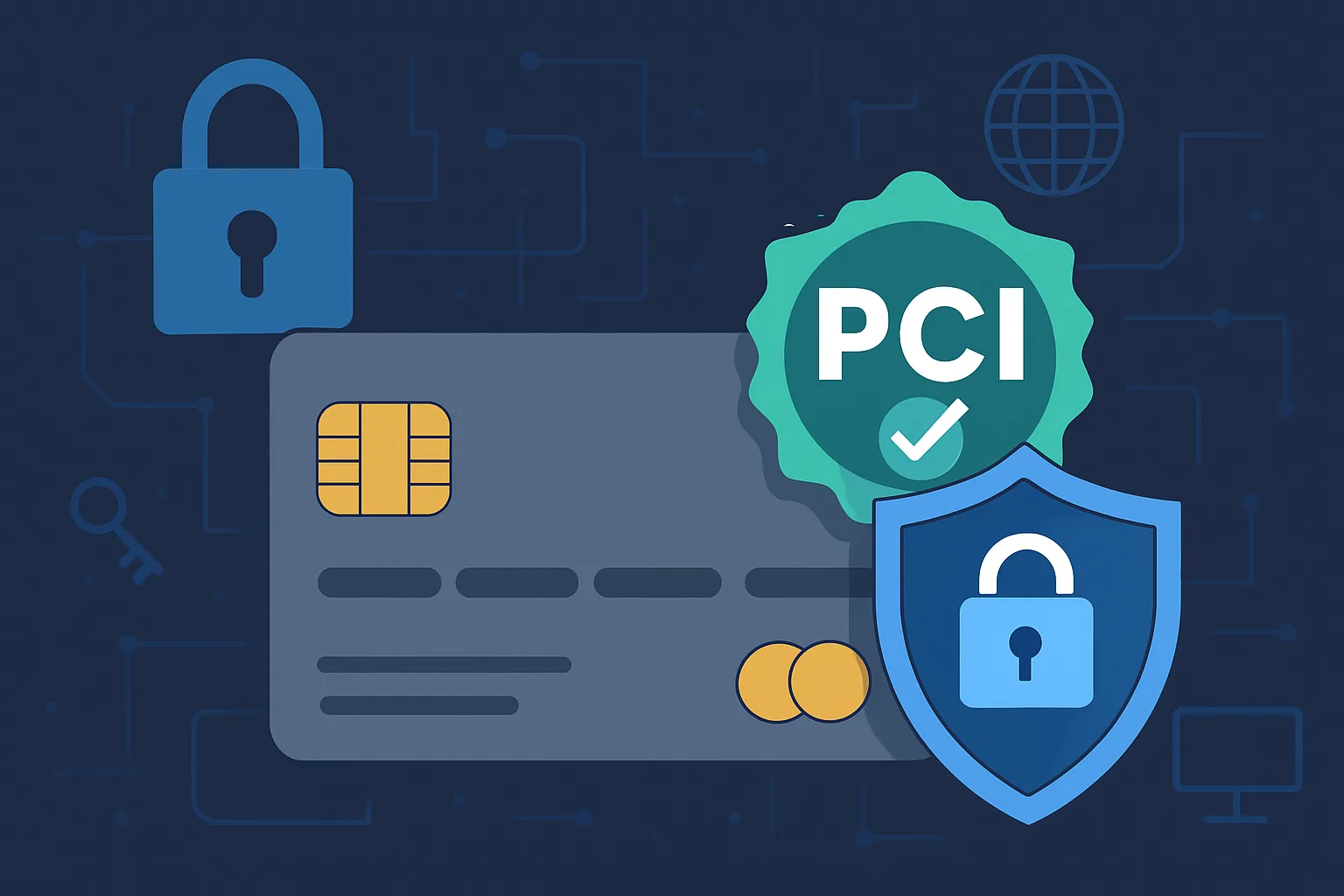In a digital age where cybercrime continues to surge, safeguarding payment data is no longer optional—it’s mandatory. Whether you’re a small business processing a few transactions a day or a large enterprise managing thousands, achieving and maintaining PCI-DSS certification is a vital part of your cybersecurity strategy.
This article breaks down what PCI-DSS (Payment Card Industry Data Security Standard) is, who needs it, and why it’s essential for protecting customer trust, avoiding legal penalties, and fortifying your payment infrastructure.
What Is PCI-DSS?
PCI-DSS is a globally recognized security standard designed to ensure that all companies handling credit card information maintain a secure environment. It was developed by major credit card brands (Visa, Mastercard, American Express, Discover, and JCB) and is enforced through the PCI Security Standards Council.
The framework includes 12 requirements focused on:
- Network security
- Access control
- Data protection
- Vulnerability management
- Monitoring and testing
Who Needs PCI-DSS Certification?
Any business that stores, processes, or transmits cardholder data must be PCI compliant. This includes:
- E-commerce platforms
- Brick-and-mortar retailers
- SaaS platforms handling subscriptions
- Financial service providers
- Payment gateways and processors
Even if you outsource payment processing to third parties, you’re still responsible for ensuring PCI compliance through vendor risk management.
Core Objectives of PCI-DSS
The 12 requirements of PCI-DSS are grouped into 6 high-level objectives:
| Objective | Sample Requirement |
|---|---|
| Build and maintain a secure network | Use firewalls and avoid default passwords |
| Protect cardholder data | Encrypt data at rest and in transit |
| Maintain a vulnerability management program | Use antivirus and patch systems |
| Implement strong access control measures | Restrict data access on a need-to-know basis |
| Regularly monitor and test networks | Audit logs and run security scans |
| Maintain an information security policy | Document and enforce practices organization-wide |
Levels of Compliance
PCI-DSS categorizes merchants into four levels based on transaction volume:
| Level | Annual Transactions | Compliance Requirements |
|---|---|---|
| Level 1 | > 6 million | On-site assessment + quarterly scans |
| Level 2 | 1–6 million | Self-assessment + scans |
| Level 3 | 20,000–1 million (e-commerce) | SAQ and scans |
| Level 4 | < 20,000 | Varies by acquirer |
Even Level 4 merchants must comply—non-compliance can lead to hefty fines, data breaches, and loss of processing privileges.
Steps to Achieve PCI-DSS Compliance
1. Scope Your Environment
Identify all systems that store, process, or transmit cardholder data. This is your Cardholder Data Environment (CDE).
2. Gap Assessment
Perform an internal audit to check where your systems fall short of PCI-DSS controls.
3. Remediate Issues
Fix any security gaps—this may include patching systems, updating configurations, or replacing legacy components.
4. Validate Compliance
- Complete the appropriate Self-Assessment Questionnaire (SAQ) or
- Hire a Qualified Security Assessor (QSA) for Level 1 assessments.
5. Ongoing Monitoring
PCI-DSS is not a “one and done” task. It requires continuous scanning, log reviews, change control, and policy maintenance.
Common Pitfalls to Avoid
| Mistake | Why It’s Risky |
|---|---|
| Storing unencrypted card data | Violates core PCI principles |
| Inadequate firewall configurations | Allows unauthorized access |
| Reusing default passwords | Easy entry point for attackers |
| Poor patch management | Leaves systems vulnerable to known exploits |
| Not segmenting the network | Expands attack surface unnecessarily |
Why PCI-DSS Matters in 2025
- Zero-trust architectures now assume breach; PCI-DSS enforces least-privilege and secure-by-design principles.
- Cyber insurance providers increasingly require proof of compliance.
- Customer trust hinges on visible security practices—displaying compliance builds credibility.
- Fines and penalties from non-compliance can reach hundreds of thousands of dollars after a breach.
Conclusion
PCI-DSS certification is more than just a checkbox—it’s a foundational layer in any organization’s security posture. With payment fraud and data theft on the rise, businesses can’t afford to cut corners when it comes to securing financial transactions.
By becoming PCI compliant, you not only reduce your risk profile but also build trust with your customers, business partners, and payment processors. In today’s world, trust is currency—and PCI-DSS is how you earn it.


